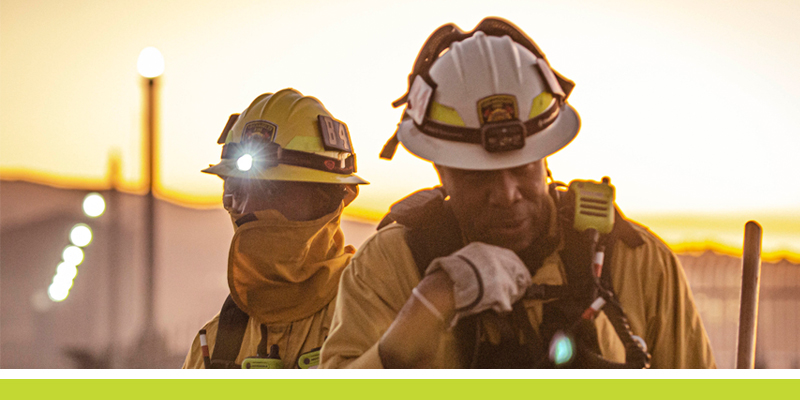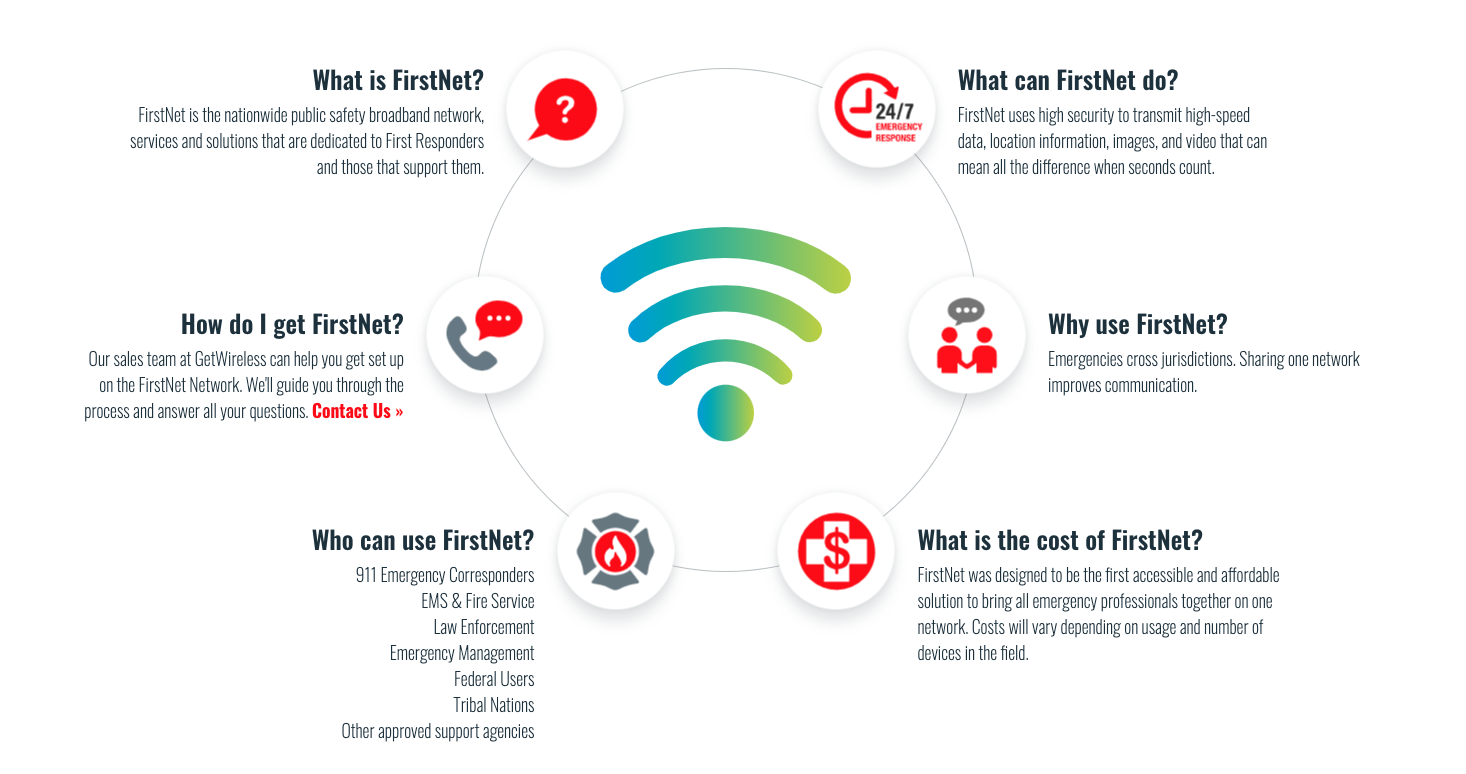
DOWNLOAD THE INFOGRAPHIC
Most of the time when we have issues trying to hear on a cell phone call, we turn into a version of Verizon’s original Test Man (played by Paul Marcarelli) and start repeating “Can you hear me now?” However, if the connection being made is needed by a first responder during an emergency, a momentary annoyance like this can turn into a life-threatening problem. So, what is there to do?
Enter the First Responder Network Authority (referred to as FirstNet). With the advent of FirstNet, first responders now have a reliable, secure, high-speed network they can use to send voice, data, and location information, as well as images and videos that can mean all the difference when seconds count.
The First Responder Network Authority of the United States is an independent authority within the US Department of Commerce, National Telecommunications and Information Administration. It was created under the Middle-Class Tax Relief and Job Creation Act of 2012. FirstNet is the nationwide public safety broadband network plus the services and solutions that are dedicated to first responders and those that support them. FirstNet is being built and deployed through a public-private partnership between the federal government and AT&T, offering public safety agencies and personnel a communications network built and customized to meet their needs.
The First Responder Network Authority is the federal entity charged with overseeing the creation and delivery of the FirstNet network. The agency’s role is to ensure AT&T delivers on the terms of its contract and creates a network that meets the needs of public safety now and into the future.
So, how does FirstNet differ from your regular cellular network? The short answer is in a lot of different ways. FirstNet uses different spectrum, provides benefits like priority and preemption for specific users, and offers additional features such as MCPTT, LTE broadcast, and Z-axis location capability.
One of the major differences is FirstNet’s spectrum use. The FirstNet network is based on a 20 MHz wide portion of spectrum that was allocated as part of the legislation that created FirstNet, under Title VI. The provisions in Title VI are also known as the 2012 Spectrum Act. As a result, FirstNet in the United States occupies two 10-MHz-wide blocks of spectrum found at 758-768 MHz and 788-798 MHz, also commonly known as Band 14. Band 14 uses 4G LTE technology today, but FirstNet users will eventually have access to 5G technologies as well when both are deployed, and the FirstNet core is updated. That process is expected to take years, so for the foreseeable future Band 14 will be 4G LTE. This is not a bad thing. Many jurisdictions and agencies lack the funding to immediately upgrade their equipment to 5G technologies, and several of the features listed above are not available in 5G networks today.
FirstNet is not available for just anyone to use. Use of FirstNet is limited to; 911 Emergency Responders, EMS & Fire Service, Law Enforcement, Emergency Management, Federal Users, Tribal Nations, and other approved support agencies. AT&T has a policy of allowing FirstNet users to use any available AT&T cellular band for their network traffic. However, FirstNet traffic is given preemptive use and priority on Band 14, thus making sure that emergency responders have access to the network. That means that first responder network traffic has a higher priority than regular traffic, making sure it gets through in a timely fashion, and that emergency personnel are pushed in front of regular users for network resources.
MCPTT is another benefit of the FirstNet service. Mission-Critical Push To Talk was initially specified in 3GPP Release 13 to better support first responders using the LTE network, and has been enhanced with additional capabilities in Releases 14 and 15. MCPTT allows first responders to make team calls with the push of a button, and send texts, images, videos and files to contacts and talk groups. Acting much like the radios that it is intended to replace, the FirstNet service also works with radios designed to interface with networks. This enhances the ability to communicate between response teams – even though they may have different equipment. MCPTT also allows for the sharing of location data of team members.
LTE Broadcast (also known as Evolved Multimedia Broadcast Multicast Services or eMBMS ) is a technique used to distribute data to many LTE users simultaneously on an LTE network. The ability to have an entire emergency responder team receive the same data at the same time enables them to make fast, accurate decisions and take lifesaving actions even though physically separated.
Lastly, z-axis location information is vital for first responders to know what floor a caller may be on in multi-story buildings. On November 22, 2019, the FCC voted to approve its long-anticipated Fifth Report and Order and Fifth Further Notice of Proposed Rulemaking. That order calls for the adoption of a Z-axis location accuracy metric of plus or minus 3 meters for 80% of wireless E911 calls from Z-axis capable handsets. Although not yet fully deployed, the FCC order requires the capability to be available in the top 25 markets in the US by April 3, 2021. This capability will allow emergency responders to arrive much more quickly and be able to determine the best route to the caller.
All these features and capabilities are designed to provide reliable, secure communications to first responders and emergency response teams so they can take informed and coordinated action during an emergency. Emergency responders have an extremely difficult and dangerous job, and the FirstNet network is one way we can better help them help us.
CLICK THE IMAGE TO DOWNLOAD THE INFOGRAPHIC BELOW
About The Author

David Smith
VP of IoT Solutions
Dave Smith is the Vice President of IoT solutions with responsibility for technical advisement and thought leadership around products, solutions, and services; both inside and outside of the GetWireless portfolio. Dave is a tenured information technology professional skilled in LPWAN, IoT, Wireless Technologies, Telecommunications, Software Development, Testing, and Embedded Systems. David began his career at NASA’s Jet Propulsion Laboratory and prior to joining GetWireless served as CTO and Director for two Innovative IT and IoT hardware manufacturer’s in the Twin Cities area.
